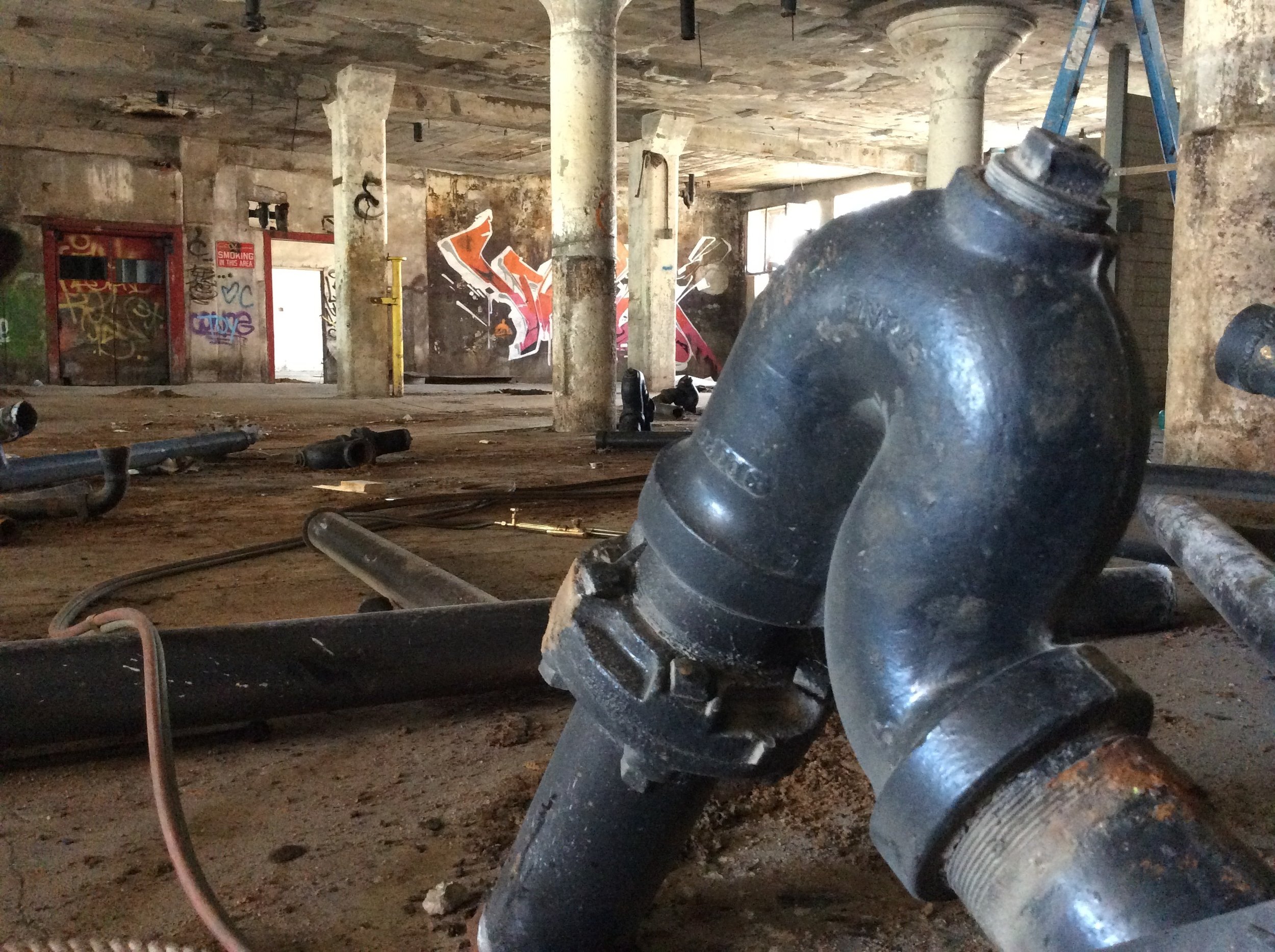In 1915 Hans Peter Henschien published the very first book of its kind titled: Packing House and Cold Storage Construction: A General Reference Work on the Planning, Construction and Equipment of Modern American Meat Packing Plants. During a critical time in America’s history when sanitation conditions and food safety were not consistent, this book changed the way we designed and built meat processing facilities. It was not until the passage of the Pure Food and Drug Act of 1906, which required federal meat inspection, that packinghouse construction changed dramatically. As hygienic standards increased, wood buildings virtually disappeared from packinghouses and were replaced by reinforced concrete. His strategic alliance with the USDA at this early juncture enabled him to set very high standards and when each chapter of the book was followed carefully, the USDA would certify the production facility and also allow government inspectors onsite to actually certify and stamp meat as US Government Inspected Products which was a game changer in 1915. This publication has also been selected by scholars as being culturally important, and is part of the knowledge base of the meat packing and cold storage industry. This work was originally published in 1915 when the design process was near completion for the Pueblo, Colorado plant. As a reproduction of a historical artifact, scholars believe, and we concur, that this work is important enough to be preserved, reproduced, and made generally available to the public via the Library of Congress. It is also being published again by a specialty house dedicated to lost and forgotten titles.
Recent research has also determined that architect Hans Peter Henschien designed more than 300 meat packing and cold storage facilities around the world and the Pueblo facility was one of his first projects with his new private practice which began in 1915 in Chicago, Illinois. From about 1890 to about 1940, packing plants typically were multistory facilities in which work flowed downward. From the exterior, the Nuckolls Packing Co. complex appears to be almost a solid mass of interconnected structures. Only the administration building, the firehouse, and the ice house stand as completely separate structures. Many of the plant buildings share common walls, although all buildings are structurally independent. They are, however, tied into one another to the extent that little or no design separation is obvious from the exterior. Interior operations were arranged so that the flow of work proceeded in a more-or-less orderly fashion from slaughter through processing and manufacturing to shipping, and the plant can therefore be divided into building clusters according to function or related functions. The complex as a whole is best understood in terms of building clusters associated by function.
The architect is known for his rational factory theory which used gravity as his main form of technological innovation where people and processes are designed to produce optimal outcomes. The main work buildings reflect Hans Peter Henschien’s principles of multistory packinghouse design. “From an operating standpoint,” he wrote in his 1915 treatise on the subject, “the killing floor in a packing plant will be considered as the starting point. Practical experience has located the killing department on the top floor of the slaughterhouse. In modern plants this will be on the fourth floor as livestock can easily be driven to this height without detriment to their condition. With such an arrangement we have the livestock conveyed by it own effort to a point from which the dressed carcasses and all the byproducts can be transferred by gravity, or by a minimum of labor, to their proper place of storage or manufacture.”



